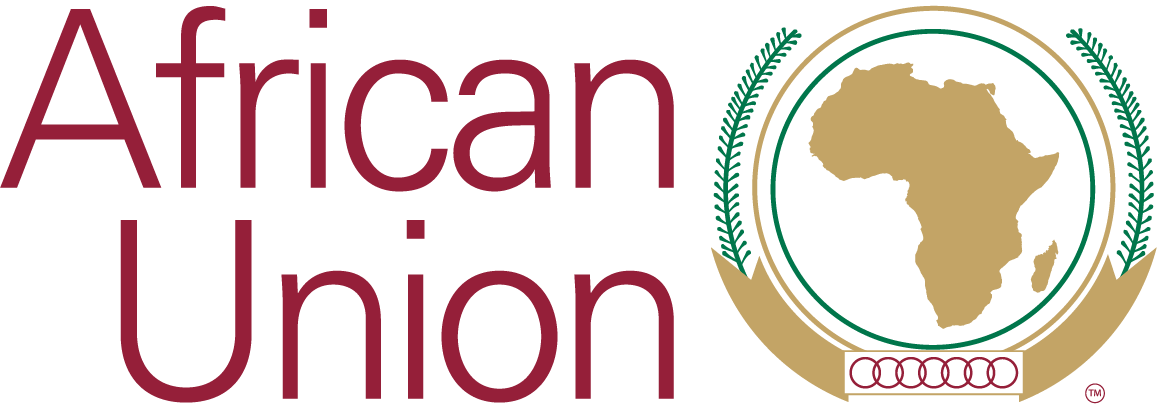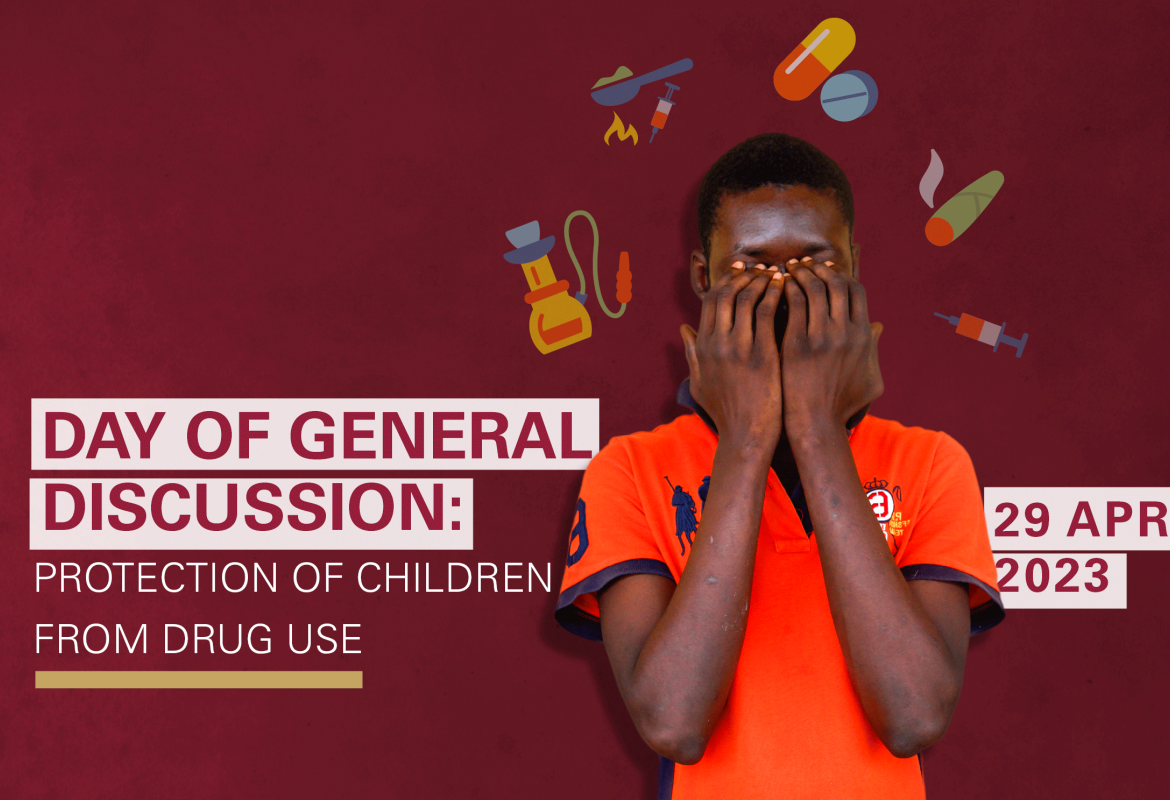English
BACKGROUND AND JUSTIFICATION
- The African Committee of Experts on the Rights and Welfare of the Child (ACERWC) notes from various sources that, globally, substance use among adolescents is increasingly becoming recognised as a public health concern and is a growing epidemic in developing countries. The most consumed substance among children and adolescents in Africa (12 to 19 years) is alcohol, with about 22.5 million users. One-third of young people have used alcohol at a point in their lives, and a little over 50 per cent partake in ‘heavy episodic drinking’. Concerning other drugs, one in four use tobacco, whereas fewer adolescents use substances like cannabis, cocaine and heroin. In some countries, other drugs have been created such as Nyaope in South Africa, Bombe in DRC. The cause for concern is that substance use often lead to negative consequences such as the so called “Microbs” in Cote d’Ivoire and the “Black babies” in Congo and long-term addiction; Adolescence is when substance use typically starts, frequently for recreational reasons, but there are other reasons people use drugs or alcohol, such as coping mechanisms for dealing with social or mental health issues or the challenges of daily life, especially for vulnerable children living in difficult conditions on the streets or in areas of conflict.
- In the last few years, African countries have developed national strategies to address the increase in substance use desorders. Some best practices include the collaboration between Non-Governmental Organisations (NGOs) and the Ministry of Health in Mauritius to implement drug use prevention and therapy programmes; the health awareness initiatives established by the Ministry of Health of Botswana to teach the public about alcohol misuse through peer education on alcohol and substance use, performing arts, and road safety awareness campaigns, all of which are supported by the alcohol tax; and the youth engagement advocacy initiative in Nigeria, YouthRISE, which routinely offers a forum that links a community of young people, including those who use drugs, with policy officials to explore better strategies for successful drug response.
- The ACERWC notes the normative frameworks on the right of all children to be protected from substance use at the international and regional level. At the international level, the ACERWC notes that the UN Convention on the Rights of the Child (CRC) establishes a right to protection against drugs under article 33 to safeguard children from the use of illicit substances and psychotropic substances as well as to stop the use of children in the manufacturing and trafficking of such substances. The Single Convention on Narcotic Drugs (1961), the Convention on Psychotropic Substances (1971), and the Convention against Illicit Traffic in Narcotic Drugs and Psychotropic Substances (1988) are the three UN drug control agreements that are linked to the CRC via article 33. Further, the United Nations Office on Drugs and Crime (UNODC) and World Health Organization (WHO) have published the International Standards on Drug Use Prevention which provide guidance on intervention measures for children at different stages of childhood and characteristics of effective systems. Several drug-related resolutions have also been adopted by the Commission on Narcotic Drugs (CND), a governing body of UNODC; resolution 59/6 recognises the vulnerability of children to substance use, resolution 60/7 calls for age-appropriate prevention measures and strategies to appropriately address the needs of children, and resolution 57/3 speaks to the promotion of evidence-based prevention measures concerning children and communities.
- At the regional level, the ACERWC notes the provisions of the African Charter on the Rights and Welfare of the Child (ACRWC) on the specific protection from the use of narcotics and illict use of psychotropic substances (article 28) and the promotion or protection of children that apply to substance use such as article 4 – best interests; article 5 – survival and development; article 11 – education; and article 14 – health. In addition, the ACERWC adopted General Comment No. 5 on Article 1 of the ACRWC (obligation of state parties) in 2018. The General Comment expounds on the obligations of Member States by flagging the four key principles of ACRWC, legislative measures, and policy development, among others. It briefly examines the duty of State Parties under article 14 (health) to evaluate legislation governing health and health-related matters to ensure that they are still relevant and offer the greatest level of protection. The General Comment cites examples and includes restrictions concerning the availability and access to alcohol and harmful drugs for children. In addition, ACERWC adopted Africa’s Agenda for Children 2040: Fostering an Africa Fit for Children (Agenda 2040), and aspiration 7 seeks to ensure that by 2020 all children are protected against violence, exploitation, neglect and abuse, and references article 28 of ACRWC.
- The ACERWC also notes that the African Union (AU), through the Division of Social Welfare and Drug Control, facilitate the implementation of the African Union Plan on Action on Drug Control and Crime Prevention (AUPA), the fifth strategic framework guiding the development of drug policy on the continent. The revised AUPA (2019 – 2023) recognises the issue of substance use among young people and the reinforcement of family support since dealing with a child or grandchild who takes drugs is a novel situation for parents, grandparents, and guardians in the African context. The AUPA is guided by nine pillars, with specific objectives addressing the issue of children and substance use. It calls for the application of evidence-based prevention methods like age-appropriate drug awareness campaigns, highlighting drug facts, and encouraging the destigmatisation and social inclusion of students who have started using drugs by involving them in sport, culture, and leisure activities, in order to stop or delay the onset of drug use. It also calls on the collaboration of AU Member States to share best practices on treatment programmes for drug uses, including children and young people.
- Further, during the third Ordinary Session of the African Union Specialized Technical Committee on Health, Population and Drug Control held from July 29 to August 02 2019, in Cairo, Egypt, the draft report of the Pan African Epidemiology Network on Drug Use (PAENDU Report) was presented. The report provided information from several African countries, namely, Angola, Botswana, Cameroon, Ghana, Guinea, Kenya, Liberia, Mauritius, Nigeria, Senegal, South Africa, Tanzania, Togo, Uganda and Zambia. Most participating countries have similar socioeconomic development, characterized by high youth populations—more than 80% of whom are under 25—and a quick rate of population growth that frequently approaches or exceeds 3%. According to the PAENDU Report, many countries had high rates of new cases, including 89% in Ghana, 95% in Kenya, 66% in Nigeria and 83.5% in South Africa. Young people, mainly between the ages of 15 and 34, made up the majority of drug users seeking treatment in the institutions included in the studies in all countries that provided information on age.
- Despite developments noted at the international, regional and national levels, challenges persist concerning protecting children from substance use and employing effective prevention measures. The lack of readily accessible, trustworthy, and comparable data on substance use in Africa makes it difficult to comprehend the scope, associated patterns, and health effects, especially in light of population growth. Most of the continent's drug prevention, treatment, and care are not evidence-based, even though there are examples of some great best practices in certain countries. The options for full aftercare, which includes chances for education, economic empowerment, and sustainable lifestyles, are limited to nonexistent for those who complete treatment for substance use. Thus, substance use poses consequences and risks that inflict on the rights and welfare of children, including but not limited to the right to education (article 11), health (article 14), parental care and protection (article 19), and indeed, protection from substance use (article 28).
In light of these facts, the ACERWC intends to hold a Day of General Discussion on protection of children from substance use during its 41st Ordinary Session, which will be held on 29 April 2023.
The Concept note is now available:
Apr 27 2023







